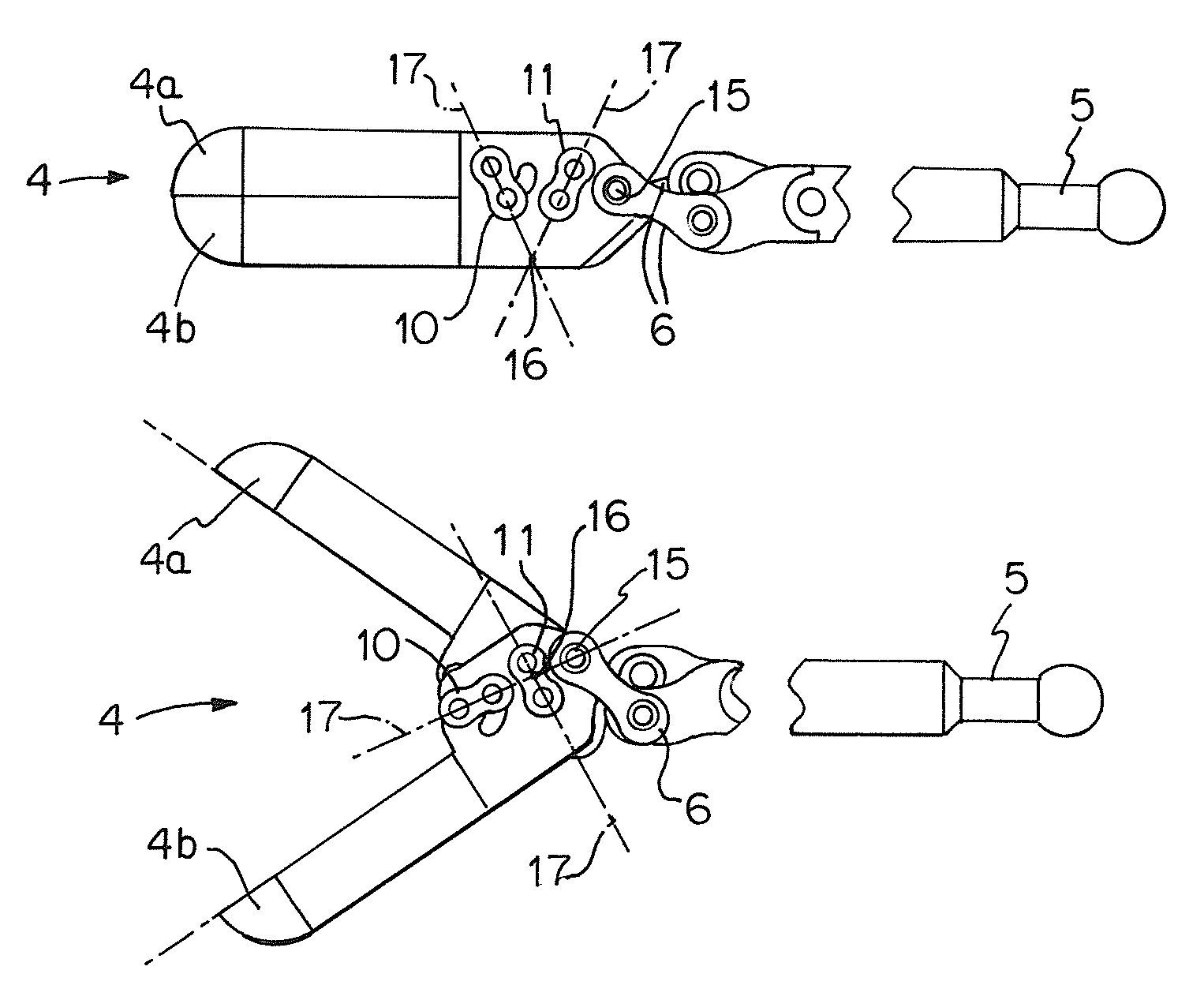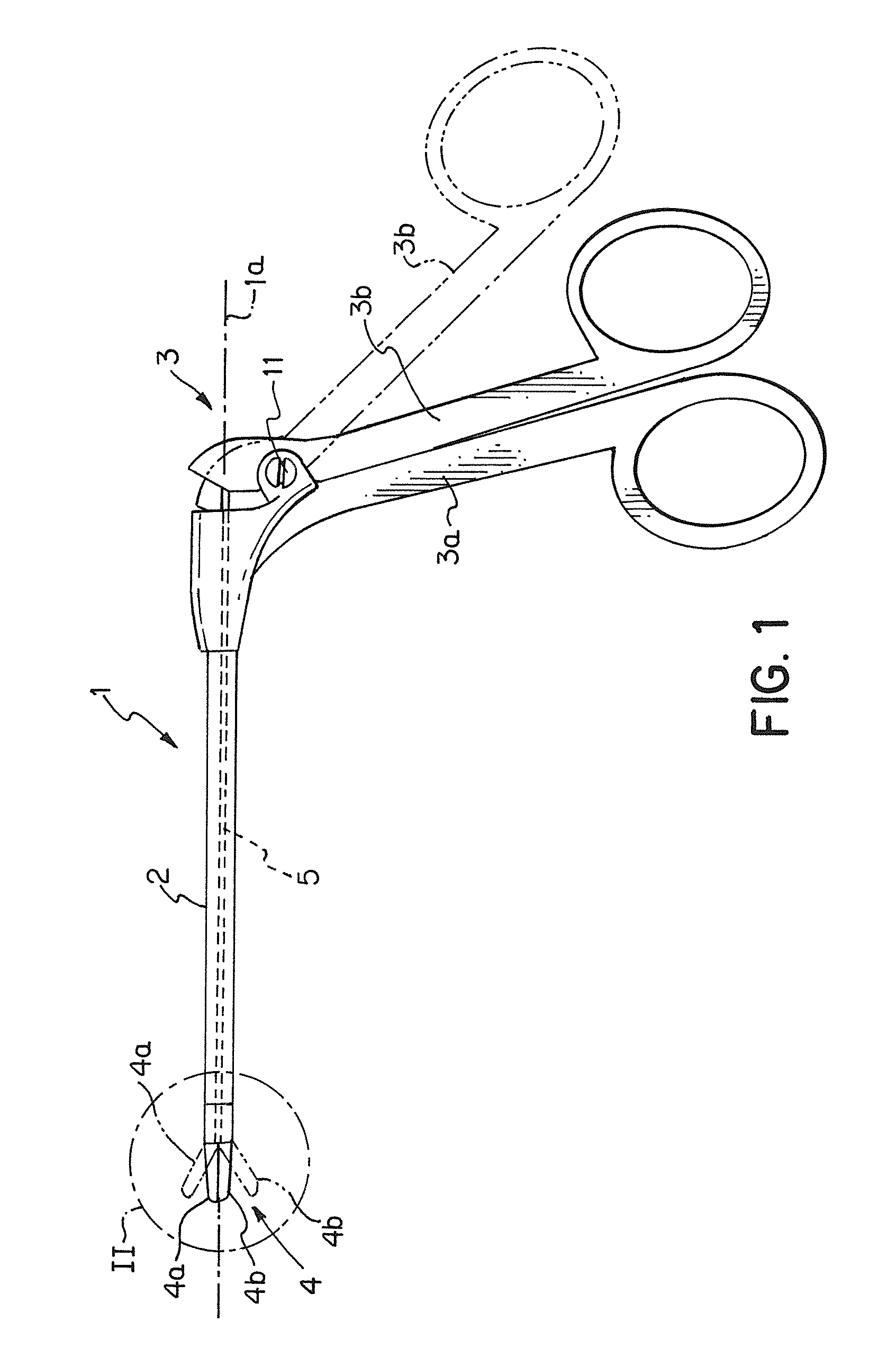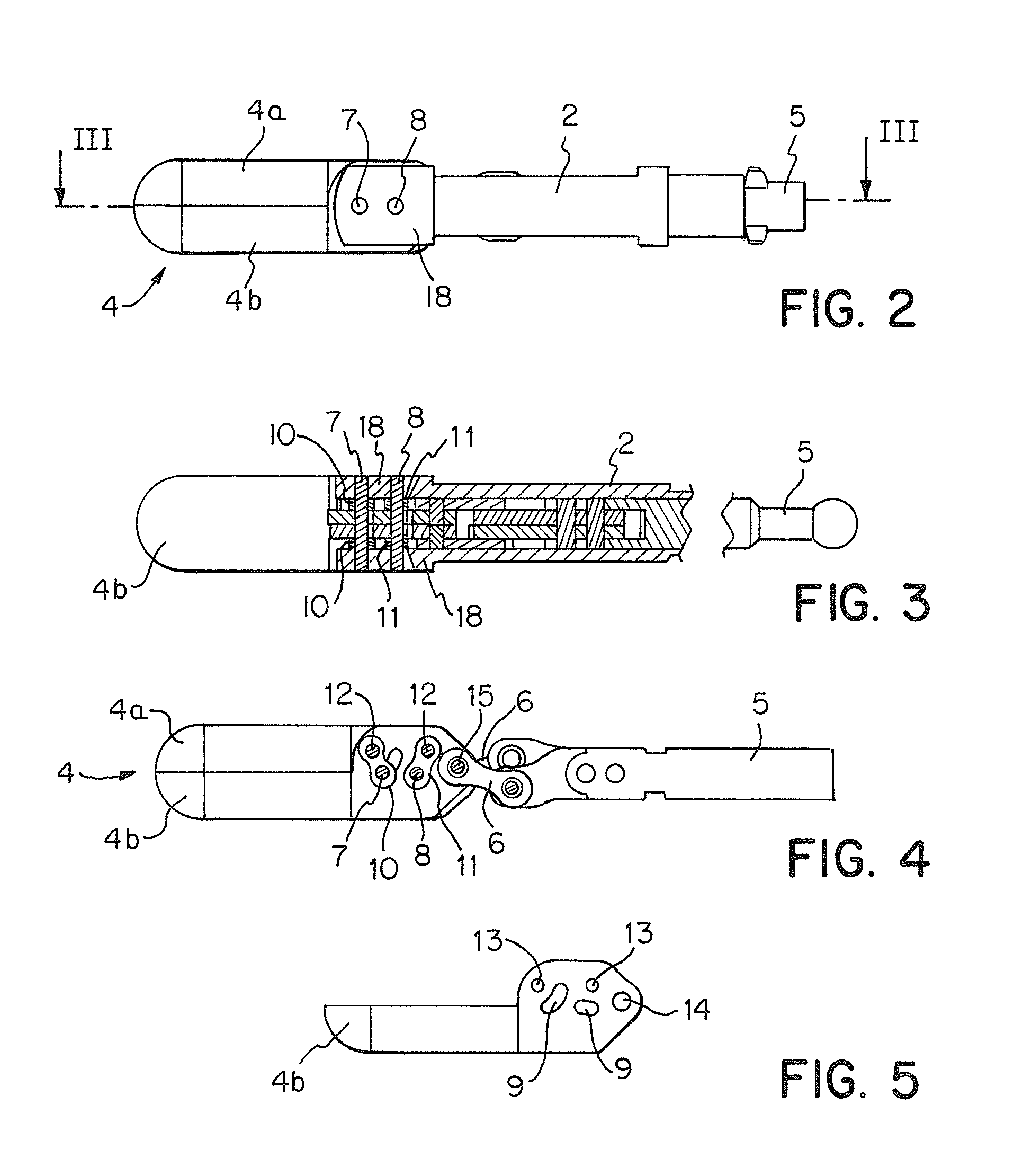Medical instrument
a technology of instruments and instruments, applied in the field of medical instruments, can solve the problems of increasing the diameter of the instrument in the area between the push-pull rod and the tool, not always available, and the inability to use known instruments in all operations
- Summary
- Abstract
- Description
- Claims
- Application Information
AI Technical Summary
Benefits of technology
Problems solved by technology
Method used
Image
Examples
first embodiment
[0038]To ensure that in the first embodiment shown in FIGS. 2 through 6c, on the one hand a sufficient transmission of force can be applied for the required cutting or clamping forces of the push-pull rod 5 on the jaw members 4a and 4b and, on the other hand, the dimensions of the instrument are not enlarged by the gear mechanism, the jaw members 4a and 4b are positioned so that they control two axles 7 and 8, which in turn are mounted parallel to one another and perpendicular to the instrument longitudinal axis 1a in the shaft 2, so that in the jaw members 4a and 4b arc-shaped spaces are opened up for the axles 7 and 8.
[0039]The rotatable jaw members 4a and 4b are coupled with the axles 7 and 8 positioned in the shaft 2 by means of two pivot gears 10 and 11 per jaw member 4a, 4b, so that the pivot gears 10, 11 ensure an increased force transmission ratio between the push-pull rod 5 and the jaw members 4a, 4b.
[0040]The structure of the jaw members 4a, 4b and their coupling with the...
second embodiment
[0045]the power transmission mechanism, shown in FIGS. 7a to 7c, between the push-pull rod 5 and the jaw members 4a and 4b is differentiated from the previously described embodiment in that in this embodiment each of the two jaw members 4a and 4b.
[0046]The second embodiment of the force transmission mechanism, shown in FIGS. 7a through 7c, between the push-pull rod 5 and the jaw members 4a and 4b, is distinguished from the previously described embodiment in that in this version each of the two jaw members 4a and 4b is coupled with the shaft 2 by only one pivot gear 10.
[0047]In this embodiment this coupling is performed in such a way that every pivot gear 10 of each jaw member 4a, 4b is rotatably mounted with one end immovably positioned on a stud 12 situated on the respective jaw member 4a, 4b and with the other end rotatably mounted on an axle neck 19 positioned immovably on the side of the shaft closer to this jaw member 4a, 4b.
[0048]As an alternative to the one-sided mounting o...
third embodiment
[0050]FIGS. 8a and 8b show the force transmission mechanism between the push-pull rod 5 and the jaw members 4a and 4b. This embodiment, in contrast to the two previously described structural embodiments, has the essential difference that the push-pull rod 5 is not connected with the jaw members 4a and 4b by an intermediate toggle joint 6 but rather directly by means of a bearing bolt 22.
[0051]In addition, the third embodiment, shown in FIGS. 8a and 8b, is distinguished from the two versions previously described and shown in FIGS. 7a through 7c in that here no guide tracks for bearing pins are provided in the jaw members 4a and 4b. Instead, the rotatable jaw members 4a, 4b are coupled with the shaft 2 entirely by one pivot gear 10 each, which is mounted with one end rotatably but immovably on a stud 12 mounted on the respective jaw member 4a, 4b and with the other end rotatably mounted on an axle neck 9 positioned immovably on the side of the shaft closer to this jaw member 4a, 4b.
[...
PUM
 Login to View More
Login to View More Abstract
Description
Claims
Application Information
 Login to View More
Login to View More - R&D
- Intellectual Property
- Life Sciences
- Materials
- Tech Scout
- Unparalleled Data Quality
- Higher Quality Content
- 60% Fewer Hallucinations
Browse by: Latest US Patents, China's latest patents, Technical Efficacy Thesaurus, Application Domain, Technology Topic, Popular Technical Reports.
© 2025 PatSnap. All rights reserved.Legal|Privacy policy|Modern Slavery Act Transparency Statement|Sitemap|About US| Contact US: help@patsnap.com



